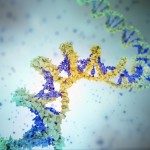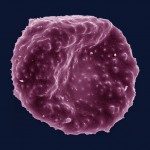Link to Pubmed [PMID] – 18809933
Antimicrob. Agents Chemother. 2008 Dec;52(12):4233-40
No data were available concerning Plasmodium vivax resistance to chloroquine (CQ) in Madagascar. We investigated the therapeutic efficacy of CQ in P. vivax malaria, the prevalence of mutations in the pvcrt-o and pvmdr1 genes before treatment, and the association between mutant parasites and the clinical response of the patients to CQ treatment. Clinical isolates were collected at six sentinel sites located in the three epidemiological strata for malaria throughout Madagascar in 2006. Patients were enrolled, treated, and followed up according to the WHO 2001 guidelines for P. vivax infections. Sequencing was used to analyze polymorphisms of the pvcrt-o (exons 1 to 6) and pvmdr1 genes. The treatment failure rate, after adjustment for genotyping, was estimated at 5.1% for the 105 patients included, ranging from zero in the South to 14.8% in the foothills of the Central Highlands. All samples were wild type for pvcrt-o but mutant for the pvmdr1 gene. Ten nonsynonymous mutations were found in the pvmdr1 gene, including five new mutations, four of which were present at low frequencies (1.3% to 7.5%) while the S513R mutation was present at a much higher frequency (96.3%). The other five mutations, including Y976F, had been described before and had frequencies of 97.8% to 100%. Our findings suggest that CQ-resistant P. vivax isolates are present in Madagascar, particularly in the foothills of the Central Highlands. The 976Y pvmdr1 mutation was found not to be useful for monitoring CQ resistance. Further efforts are required to develop suitable tools for monitoring drug resistance in P. vivax malaria.


